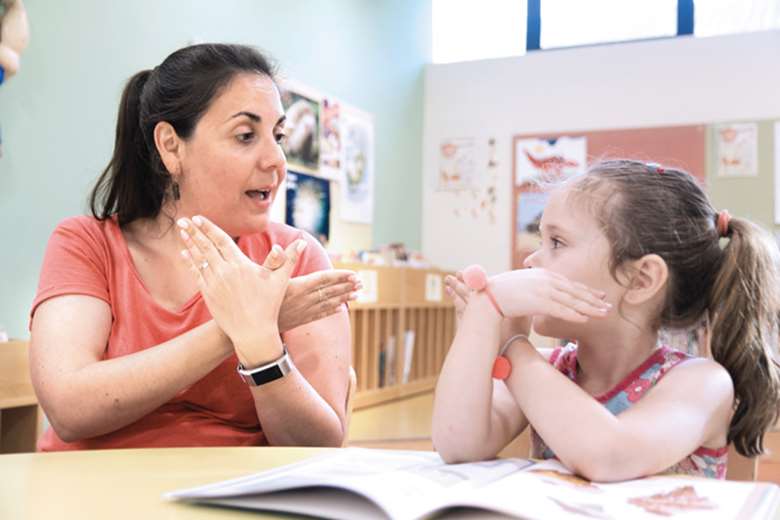Bi-borough develops joint system for SEND services
Joanne Parkes
Thursday, January 2, 2020
Westminster and Kensington and Chelsea councils collaborate on SEND services.

- Service caters for 2,000 children and young people aged from birth to 25
- Innovations include a cloud-based system alongside a remodelled service
ACTION
Reforms introduced under the Children and Families Act 2014 have seen an increase in expectations on council special educational needs and disabilities (SEND) services. This, combined with a rising number of children being identified as needing SEND support, has led to councils rethinking how they deliver services.
London’s bi-borough partnership between Westminster and Kensington and Chelsea councils is tackling this challenge with innovation, building on initial efficiencies established when they first began sharing children’s services in 2011.
While employees of both boroughs share an office at Kensington Town Hall, service integration across borough boundaries has been largely limited to strategic working.
Assistant director of SEND at Westminster City Council Julie Ely explains that the leadership team “operates as a bi-borough”, but beyond that, the service delivers “as individual sovereign boroughs”.
The allocated case worker may be an employee of either council, but they deliver within the framework of governance of the local authority where the child or young person lives, so there is a clear line of political accountability.
The leadership team is made up of Ely’s role and three principal leads – one for each of the boroughs and another for quality assurance and improvement. It performance manages the local authorities on a bi-borough level but also individually to ensure each council’s statutory obligations around EHCP case progression are being met.
Working across two boroughs draws best practice from a wider base and helps the service respond flexibly to need, says Ely.
“We can be more agile by working together,” she explains.
“A key benefit is the flexibility in the way we deploy resources to serve the needs of our communities.
“We are able to identify good practice across the boroughs and learn from each other – we have a chance to see what’s working well and scale that up so families in both boroughs benefit.”
This could include commissioning therapy services that support school provision, or offering training to special needs co-ordinators and planning for a new special school.
On the other hand, Ely highlights communication as a potential pitfall. “You have to make sure everyone understands what you’re trying to do,” she says.
This structure had remained static for some years, but after Hammersmith left the tri-borough partnership in 2018, the process of change began to gather pace, beginning with a new banner for the service “One SEND”.
A new cloud-based system called Eclipse came into operation in July 2019, in good time for the launch of three fully integrated SEND teams on 6 January 2020. This includes a “20-Week Team” that operates as a front door when a new assessment is requested; the “Forever Team” will step in once an education, health and care plan (EHCP) is in place to support early years to primary education, and then secondary and college education; and the “Engine Room Team” will look after data, home to school transport and mediation.
They are made up of existing staff who expressed a preference for a particular area of work, explains Ely. “Whether from one council or another makes no difference, they are all under the fully integrated team.”
She describes the transfer to Eclipse as “absolutely essential” to the redesign. “Families were saying they didn’t want to keep telling their story and the new system means anyone can deal with an inquiry as the history, plan and status of the case is visible in one place.”
Dual processing of statutory returns was a key requirement. Under the old system this was done separately, adding at least 30 hours of workload per authority. Now, when an assessment request comes in, a staff member records which borough the family lives in, allowing returns to be completed with ease.
IMPACT
Since the new system has been introduced, all EHCPs have been completed within the statutory period, compared with a rate of 70-80 per cent previously, which was still above the national average of 60 per cent.
It has also introduced “significant time savings”, which Vik Verma, project director of One SEND, estimates to be 10,000 hours a year, with a value of £240,000.
“The financial savings are reinvested and free up staff to spend more time with clients,” Verma adds.
While there is formal quarterly performance monitoring, Ely believes this is not as valuable as the “real time” feedback from parent carer forums, which meet regularly.
“I think we have already started to see the benefits,” Ely says. “Staff are already more confident and we have fewer complaints.
“Families have been saying things are improving since the start of the year.”
The bi-borough hopes One SEND will become a beacon of best practice.
“We want to be the best in the country,” says Verma.
“Bi-borough isn’t just about delivering services in two boroughs, it’s an opportunity to innovate and enable continuous reflective practice.”




